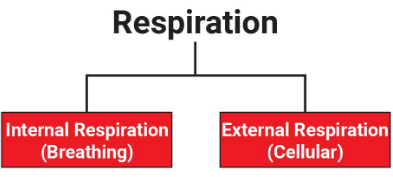Difference between Internal and external breathing

The Difference between Internal and External Breathing is given here. Respiration is a process that allows living beings to exchange gases with the external environment. In the case of external respiration, we find a process that involves the gas exchange of oxygen and carbon dioxide between the alveolus and the pulmonary blood capillaries, while internal respiration is the exchange of oxygen between the tissue capillaries and cells. , transforming oxygenated blood into deoxygenated. keep reading…
Internal breathing
It is the exchange of gases at the tissue level. It is a process that occurs in all tissues of the body and consists of the transit, by osmosis, of oxygen from the capillaries of the arteries to the cells and of carbon dioxide from the cells to the venous capillaries. In short, it is the process of respiration where the exchange of gases between blood and tissues occurs. It is the last respiratory process and one of the most complicated since biochemical reactions are produced that allow cells to obtain energy.
There are two types of internal breathing:
- Aerobic respiration.
- Anaerobic respiration.
It is produced thanks to erythrocytes or red blood cells. They are the cells responsible for transporting oxygen from the lungs to the cells of the body.
External breathing
It is one where gas exchange takes place through the plasma membrane without the intervention of internal respiratory structures. The dissolved oxygen in the water enters by diffusion and the dioxide leaves by the same mechanism. In the human body, it is one that takes place outside the cellular structures. It is done through the nose, trachea, larynx, pharynx, lungs, and other respiratory structures. Oxygen passes from the capillary structures of the respiratory organs to the cells responsible for transporting it. suggested video: Internal vs External Breathing
Difference between Internal and External Breathing
- External respiration is the exchange of oxygen and carbon dioxide between the pulmonary alveolus and the pulmonary blood capillaries. It enriches the blood containing carbon dioxide with oxygen and helps us expel this gas out of the body.
- Internal respiration is the exchange of oxygen between tissue capillaries and cells. Allows oxygenated blood to become deoxygenated blood.